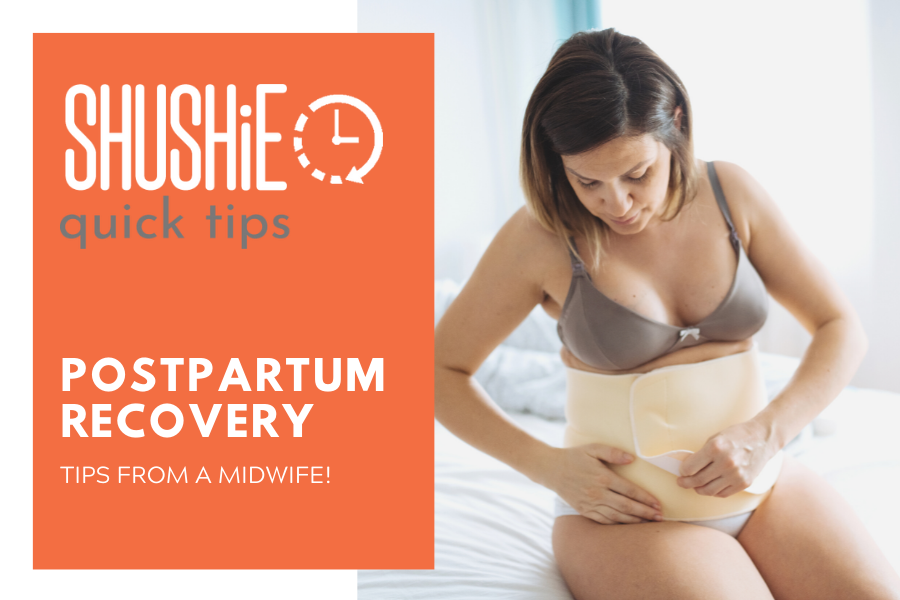
You've read postpartum recovery tips on sleep, doctor's visits and breastfeeding, but this doesn't paint the full picture.
For an unfiltered vision of life-after-birth, we spoke a registered midwife, Carmen, who's been delivering babies for nearly five years.
Through her work with countless new moms in New South Wales, Australia, Carmen has encountered everything from postpartum recovery tips on major birth surgeries to weird cravings.
Keep reading for her uncommon tips on what to expect during your postpartum recovery.
Are postpartum food cravings normal? Should women give into them?
Food cravings are normal and are thought to largely relate to hormonal changes occurring in the body.
Different cultures crave different foods, so it isn't a case of “the baby asking for it” as such. If the food is safe to eat during pregnancy (i.e., not a food that may contain Listeria or alcohol, etc.), and you don't have any other dietary restrictions (like gestational diabetes), then it's okay to indulge.
However, keep in mind that if the food you are craving isn't healthy, then you should limit the amount you eat as excess weight gain can come with its own set of pregnancy complications.
Some women crave nonfood items, like chalk, paper, ice, or clay. This is called pica and should be mentioned to the woman's health care provider as it can be caused by a nutritional deficiency.
When is the right time for new moms to return to an exercise routine? Should they take it easy at first?
This will depend on the type of birth the woman has had, so check in with your health care provider and a physio prior to resuming anything too strenuous for the best postpartum recovery tips.
Your body still has extra elasticity for the first 6 weeks post birth, so no running or jumping for the first 6 weeks. Walking is okay; however, if you feel pressure on your pelvic floor muscles, you should turn around and head home.
In the first 6 weeks after having a baby, pelvic floor exercises and mild exercise such as walking is enough to not risk causing any injuries and can help with postpartum recovery.
If you've had a c-section, an episiotomy, or 3rd or 4th degree tear, then it is extra important to get the all-clear from your health care provider before starting anything.
Do you have any tips for healing faster after an episiotomy or c-section?
When we've experienced major surgery or trauma to our bodies, it is important to recognize that recovery is slow, and repair occurs at a cellular level.
There isn't anything we can do to rapidly speed up the process. However, because our body repairs at a cellular level, eating foods that are highly nutritious and drinking plenty of water will allow the body to do its job more efficiently and heal in a timely manner.
Also, rest is a big factor in aiding the healing and postpartum recovery process. This is hard to do with a new baby, but it's important to rest when you can. If this means turning away visitors so you can sleep, then that is what you do.
It is also important to listen to your health care provider with regards to wound care, as an infection will obviously slow down the healing process.
What’s your go-to treatment for sore nipples?
My go-to treatment is prevention over cure! Global Health Media has an amazing video on correct attachment. Breastfeeding can be uncomfortable at first, but it should never be a pinching feeling.
A tugging sensation is fine and normal. Pinching means something isn't quite right and you're better off to break the seal (pop your little finger in the baby's mouth) and seek help and try again. In the early stages of postpartum recovery, positioning is very important, and holding the baby in a way that allows for optimal positioning can feel a little awkward for a new mom.
Feeding through the pain just because the baby is on often leads to sore, damaged nipples and a baby who is nipple-feeding instead of breastfeeding. If you do end up with sore nipples, express some colostrum or breast milk on to the nipples and let them air dry.
You can use hydrogel discs and lanolin; however, you should talk to your lactation consultant about these before using.
Related Articles
Regain Strength After Childbirth
Top 6 Items for Your Postpartum Mommy Kit

